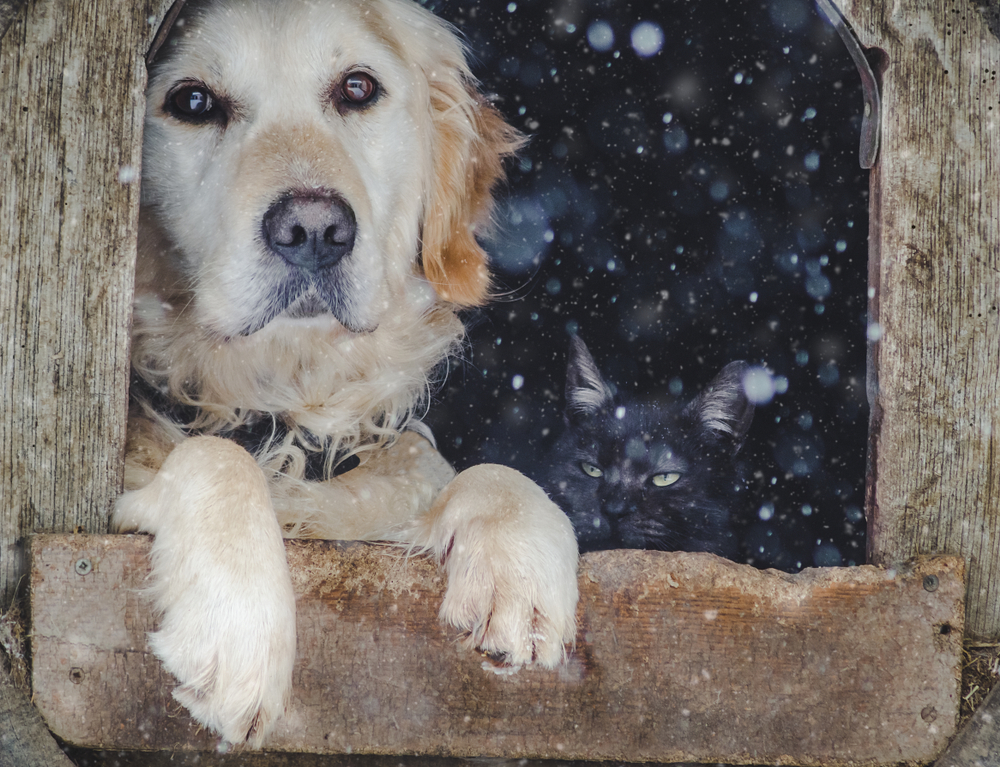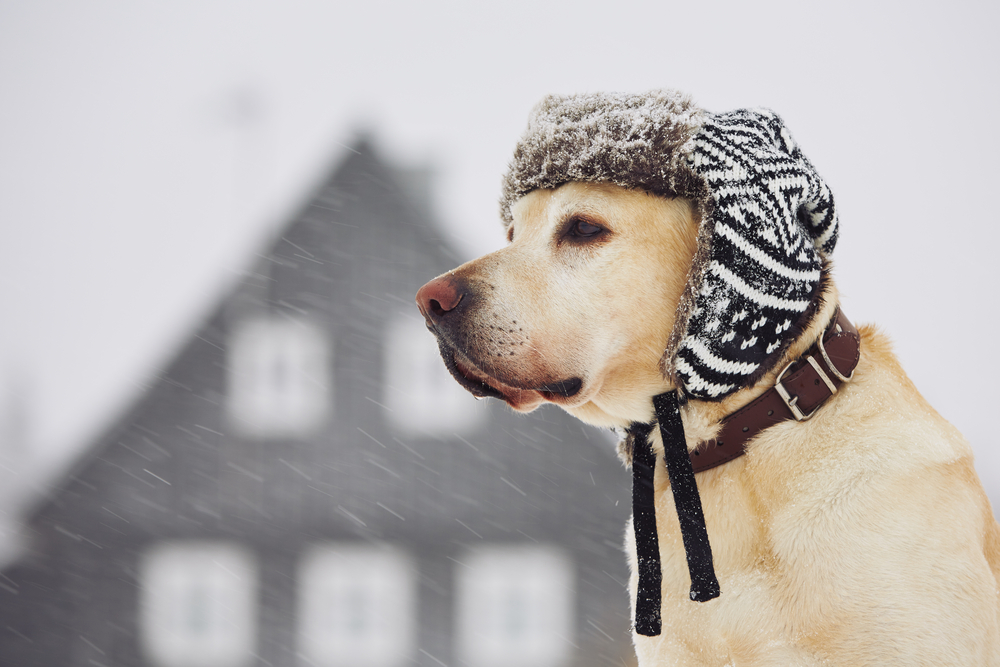This is a heads-up for all of you who have dogs that live outside during the winter.
Remember how you hate hanging Christmas lights when it’s freezing cold outside? You’re not going to be happy winterizing your dog house in those temperatures, either. In other words, you’ll be doing yourself a big favor if you set aside a few hours for this activity now — while the weather is warm.
If your pup was bred to work and live outside, chances are you’ve already provided the appropriate accommodations to keep him safe and healthy in every season. As the temperatures get ready to change again, follow these easy steps to make sure your dog house is ready for winter.

Take a close look
The first step begins with a visual inspection. Take a close look at how the structure is weathering. Most dog houses will last for several years, but their durability depends upon the climate they’re in as well as how exposed they are to the elements. Even the effects of one harsh season can damage the integrity of the structure.
Look for obvious signs of cracks in the walls, floor, and roof. Use silicone caulk to seal any separation that has developed and test the stability of the structure itself. Make sure it can withstand the harshest winter wind and heaviest snowfall your climate might deliver.
Add a doggie door
An open door on the doghouse during the summer works great for ventilation, but you’ll want to add a covering to help keep in the heat when the weather turns cold. To make it easy, measure the opening, then purchase a rubberized bath mat with slightly larger dimensions. Cut it to size and secure it to the dog house appropriately.
A piece of carpet or heavy rug works well, too, although remember: Fabric can become heavy and saturated when subjected to the rain, ice, and snow.
Find an ideal location
Although some dogs have thicker coats that tolerate wind chill better than others, all dogs feel a bitterly cold wind. So, consider moving your dog house to a more protected part of the yard. If you know which direction the wind commonly blows in your climate, position the dog house so that the entrance faces away from the blast. If possible, move the doghouse beneath an overhang on your home with its door facing an exterior wall to take advantage of the additional protection.

Insulate inside and out
Outside
Once you’ve sealed all the cracks and crevices, you can further reduce the wind’s effects by wrapping the entire house in a waterproof tarp or plastic sheeting. Secure the wrap to prevent moisture from accumulating and causing mold or rotting the wood. Remove it next season when the temperatures rise.
Raise the dog house off the ground by placing a wooden pallet beneath it. This puts an extra barrier between the cold ground and your dog’s body. Choose a pallet the same size or slightly larger than your doghouse. Place rigid foam sheeting between the doghouse and pallet for extra protection.
Inside
Natural materials such as cedar chips or straw make a cozy substrate for your dog to lie on. These materials will act as an insulated barrier between your dog and the doghouse floor. They are also good at retaining your dog’s body heat and are easy to replenish as they become soiled. For additional warmth, consider throwing in a few thermal blankets or rugs to make it extra cozy for your dog.
Additionally, you can attach carpeting, old blankets, or rugs to the walls to help retain heat, especially if your dog house is made of a non-insulated material like plastic.
Know when to bring him inside
Even if your dog is accustomed to being outside all winter, it’s always a good idea to bring him inside when the weather becomes severe. Experts agree that all pets should be brought inside if the temperature dips below 20 degrees Fahrenheit.
Even if it doesn’t get quite that cold, make sure to monitor your pet for signs of distress all winter long. Whining, shivering, anxious behavior, and burrowing are all signs that your pup is dangerously cold. Older pets, as well as those with health issues such as heart disease, diabetes, or arthritis, can have problems regulating their body temperature and might be more comfortable inside.
Plus, remember that our dogs are pack animals. Thanks to domestication, they look to their favorite human as pack leader. As a result, no matter how cozy the outside kennel might be, nothing compares to cuddling up with their human family in front of a roaring fireplace on a cold winter’s night.
Editors' Recommendations
- The best oversized dog beds your pup will love
- Are Himalayan dog chews safe for your pet? Know this before you buy
- What to do if your dog keeps throwing up with no sign of stopping
- Why you should let your dog sleep in your bed every single night
- The best ways to pet your dog to show them how much you care



